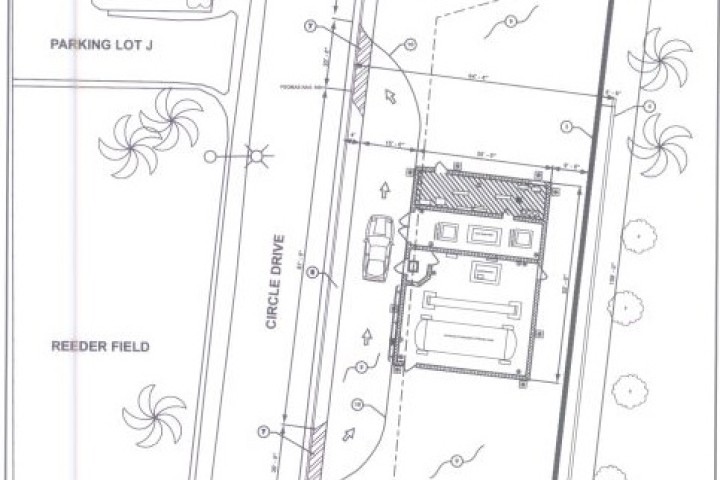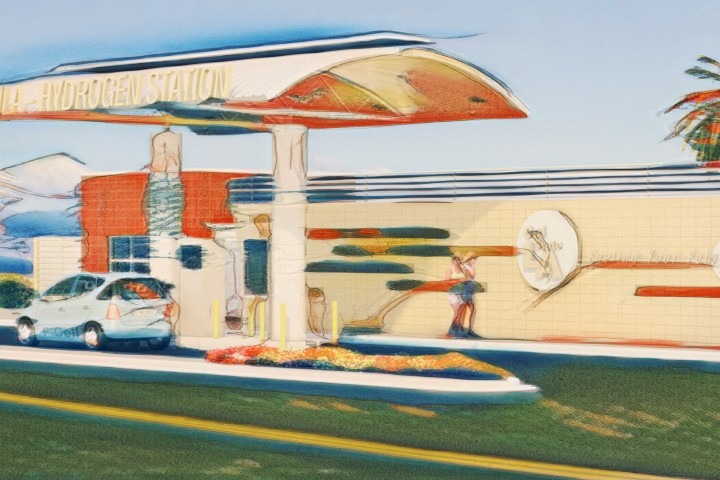The idea of having a hydrogen station at Cal State LA occurred in early 2000 to Dr. James Ettaro of the Department of Technology. He believed the station could be a learning center to educate students in the Cal State LA Power, Energy, and Transportation education program and its potential end-users. The station would create a plethora of new activities and encourage new strategies and programs related to a future power source for vehicles.

Getting Started
The first step in planning a new station was to have the support of Cal State LA and the College of Engineering, Computer Science, and Technology. As a new technology for vehicles, it was important to show that the investment would be worthwhile.
Dr. Ettaro secured a letter from GM and Hyundai about the importance of hydrogen fuel as a new technology. The first concept was for a $400,000 station, able to produce 20 kg of hydrogen per day. The station was eventually constructed to instead produce 60 kg per day.
Concerns
An initial concern of the project was to guarantee that the design, manufacturing, construction, installation, and operations of the hydrogen station would be in accordance with all existing guidelines and regulations. Another important concern was how to obtain the funding required to make the project happen.
Related to the second concern, Dr. Ettaro started contacting companies and organizations that might invest in a new vehicle power source. A hydrogen fuel cell vehicle program might have objectives of interest to various organizations, such as:
- Reducing dependence on foreign oil
- Promoting diverse and sustainable energy sources
- Reducing the use of carbon fuels
- Demonstration of fuel cell power system technologies
Donors and Support
In 2002, the Ahmanson Foundation became the first donor, investing $200,000 in the project. In 2003, Cal State LA embraced the vision of becoming the nation’s first University able to generate and dispense compressed hydrogen on-site. A management team was created by the Department of Technology to coordinate the hydrogen station plan.
With the first ideas now on paper, Quantum Technologies was contacted for fueling dispensing equipment and Proton Energy Systems for an electrolyzer. The team also relied on the help of entities like the South Coast Air Quality Management District (SCAQMD) and the National Fuel Cell Education Program (NFCEP).

Saying Goodbye to a Visionary
In 2005, Dr. James Ettaro tragically passed away, and the project stalled for several years. But during this time, his colleagues Dr. Virgil Seaman and Dr. David Blekhman pursued his vision.
Cal State LA Builds
In 2008, the State of California showed interest in building three hydrogen stations. The project requirements were that the stations be able to perform three consecutive 5 kg, 10,000 psi fills in 45 minutes (10 min/max fill) and three consecutive 5 kg, 5,000 psi fills in 25 minutes (6 min/max fill).
The management team was restructured, and changes were made to the project to meet government requirements. The Cal State LA project was approved, and a $2.7 million grant was received from the California Air Resources Board to build the station. Cal State LA was considered a strategic location for a hydrogen station because the University is only 6 miles from downtown Los Angeles and near the 710 and 10 highways.
Success and Recognition
The Cal State LA Hydrogen Research and Fueling Facility (H2 Station) was formally opened on May 7, 2014. As the nation's largest university-located hydrogen fueling facility, commissioning continues, and the facility is available to Fuel Cell Electric Vehicles (FCEVs).
The station can produce hydrogen on-site from renewable energy sources using the process known as electrolysis. FCEVs' fueling at the station emits only water vapor emissions!
On November 12, 2014, the Cal State LA Hydrogen Research and Fueling Facility became the first in the world to sell hydrogen fuel by the kilogram directly to retail customers*. This is a milestone in the commercialization of hydrogen in preparation for the next generation of electric vehicles that will be powered by hydrogen. Governor Jerry Brown's office informed the university that the fueling facility has received the certification known as the California Type Approval. This is the equivalent of getting the very first sticker from the state government to sell gasoline by the gallon. Read more: "Cal State L.A. hydrogen station becomes first in California to be certified to sell fuel to the public."
*See "2015 Annual Evaluation of Fuel Cell Electric Vehicle Deployment and Hydrogen Fuel Station Network Development", California Air Resources Board, July 2015, page 4.
The Cal State LA Hydrogen Fueling and Research Facility honors Dr. James Ettaro by becoming a learning center where students learn through research. It also welcomes the local and international community, offering tours and education. The station is a hub for new strategies and programs related to a future power source for vehicles.
Please contact us with questions or inquiries about the Cal State LA Hydrogen Fueling and Research Facility.
Dr. David Blekhman at [email protected] or Blake Cortis at [email protected]